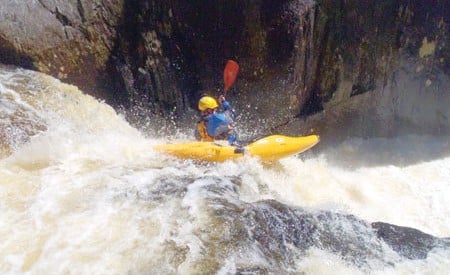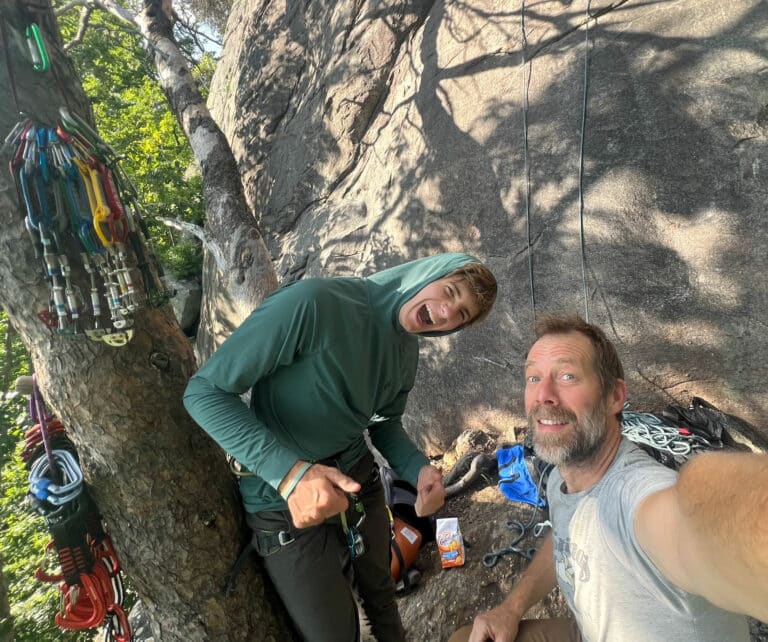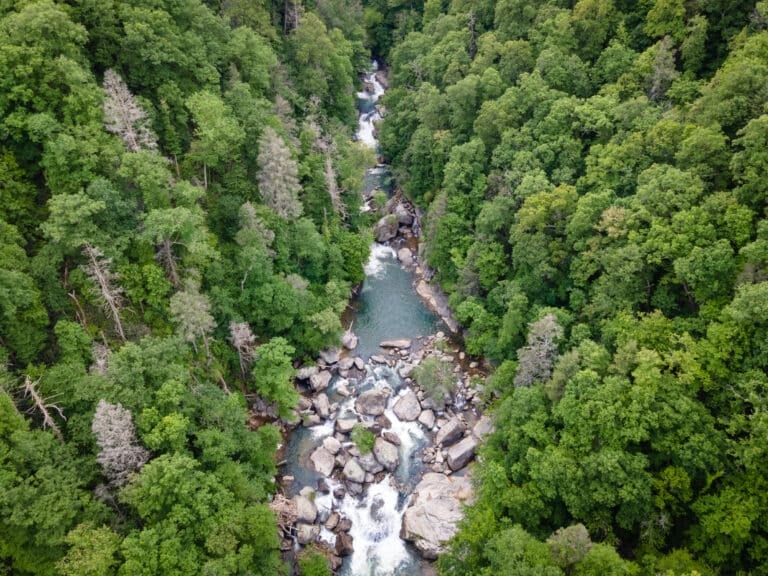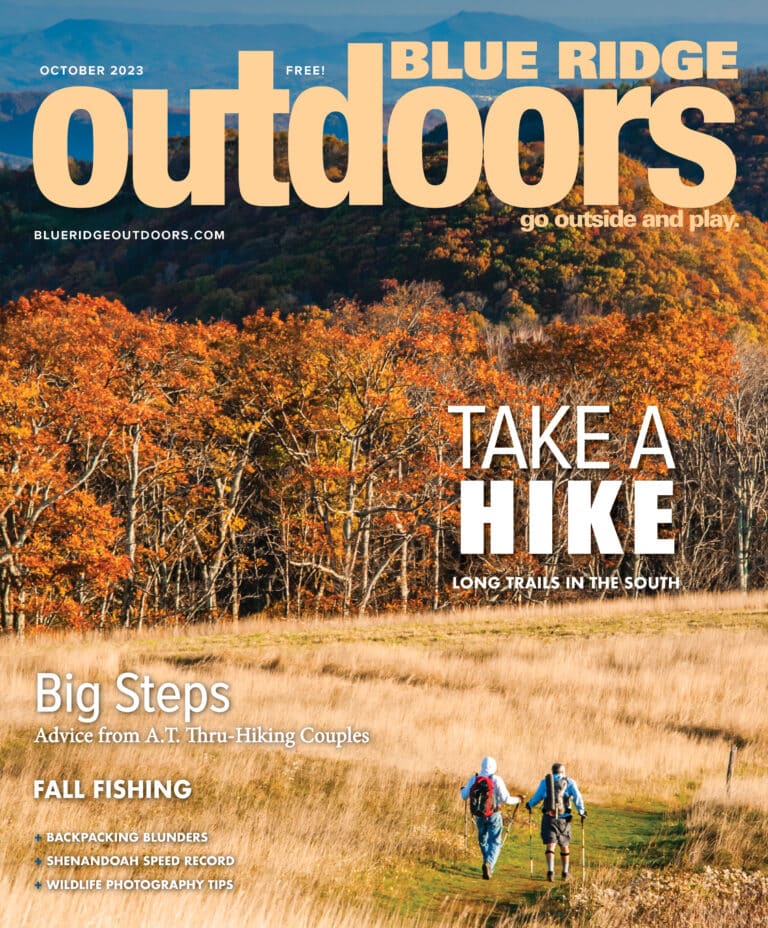I watched a friend die on the Green River in North Carolina. Witt was vertically pinned against a tombstone-shaped rock at the bottom of Chiefs. I was scouting Gorilla when I heard shouting.
“He’s pinned,” a panicked voice rang out. I turned and looked back at Witt. He was vertical but not moving. Water slammed against his back. In an instant, the boat collapsed violently, and Witt was buried in a liquid avalanche.
We ran upriver to help, but it was hopeless. I will never forget his hand. It reached up to the surface desperately. He was still alive and reaching, praying, hoping that somehow we could get a rope to that weakening hand and rescue him. He struggled for a couple of minutes before going limp. I could not see his hand after that.
Hours later, we extracted Witt’s body with the help of a rescue crew. His femurs were both broken in half, his legs limp and deformed like bags of jelly.
The second drowning I witnessed was five years later on the Russell Fork, a notoriously deadly class V run in Kentucky. The rocks there are like Swiss cheese, full of holes. John was an older man and he was rag dolled in a hole for minutes. Eventually he flushed out, still in his boat. A friend pulled him out of the kayak and onto shore. CPR was initiated, but it was far too late. John’s skin was a blue-ashen pale.
In both instances, I paddled class V the following day.
My dad got me into kayaking when I was a kid. We lived thirty minutes from the Nantahala in North Carolina in what seemed like the whitewater epicenter of the universe. What more could an eleven-year-old boater ask for? I spent several years learning the basics and eventually I was paddling 200 days a year. I became an expert hair boater and steep creeker.
My greatest fear was not death. My greatest fear was losing my edge. My greatest fear was shoulder dislocation. I lived to paddle and paddled to live.
In the shadow of all the insane boating, I led a normal life. I graduated from paramedic and nursing school, working in the field for over 10 years. I married and had a beautiful little boy. I was aware that as I forged my way through life, running difficult water, my responsibilities were increasing, but the idea did not bother me. Nor did it change the way I paddled. I became a little more conservative as I aged, but I was still running class V+ whitewater.
Then last August, rain fell in New England. My main paddling partner Alan Panebaker and I ran Glover Brook—a true gnar run full of wood and pin rocks. We approached a blind slot, and I hopped out to scout from the top. I glanced downstream and everything looked clear. I got back in my boat and shouted some directions to Alan. As I ferried into current, I felt a twinge in my gut: “Something ain’t right,” I thought. But it was too late.
I was ripped from my boat. I swam under a log breaching the slot.
“I should be dead,” I thought as I gathered my gear.
“If you had stopped in there, I would just be standing on the shore in a panic right now,” Alan said grimly.
“Yeah, there’s nothing you could have done for me, that’s for sure.”
The close call did not have a lasting effect on us. We were immediately back in our boats.
Alan died a month later. I watched him broach and pin against a sieve with a tree in it. He fought for his life, but he was on his own and there was nothing he could do. He flipped and went into the sieve. We were below him in a walled out, smooth granite bowl. By the time we got back up to the sieve, he was nowhere to be seen. We weren’t even sure he was in the sieve but threw ropes into it with fading hope. He was there, but his hands never grasped our ropes.
An hour or two later, with more manpower, we were able to move the log around and free his body. He floated through the rapids before coming to rest in a large recirculating eddy. I ran to my boat horrified and paddled up to my friend. He was the pale blue hue that is unmistakably dead.
“Oh, Alan,” I whispered under my breath as I clipped my tow tether to his lifejacket. I pulled Alan’s cold body out of the frigid, clear water. I lay across the top of him, hugging him. I looked up and saw tourists taking pictures of us with their phones.
I called Alan’s girlfriend fifteen or twenty times before finally leaving a message. “It’s Adam. Call me.”
We drove to her house that afternoon. I quickly got drunk on a bottle of Knob Creek whiskey. Its warm burn was the only thing I could feel.
When I arrived at her house, we hugged and cried. I apologized over and over. Alan’s dog barked nervously, like he expected Alan to walk in the door any minute.
There is no moral to this story. Alan, Witt, and John were in the wrong place. They died. I have many other friends who were in the wrong place. They died too.
I love the sport. It has taken me to places physically and figuratively that most people will never see. And there are more good lines than bad ones-more near misses and close calls than fatalities. Kayaking dangerous whitewater is often forgiving. The problem is that when it’s not, the toll is unbearably high.
When not on a river or trail, Adam Herzog competes in eating contests with his two-year-old son.








